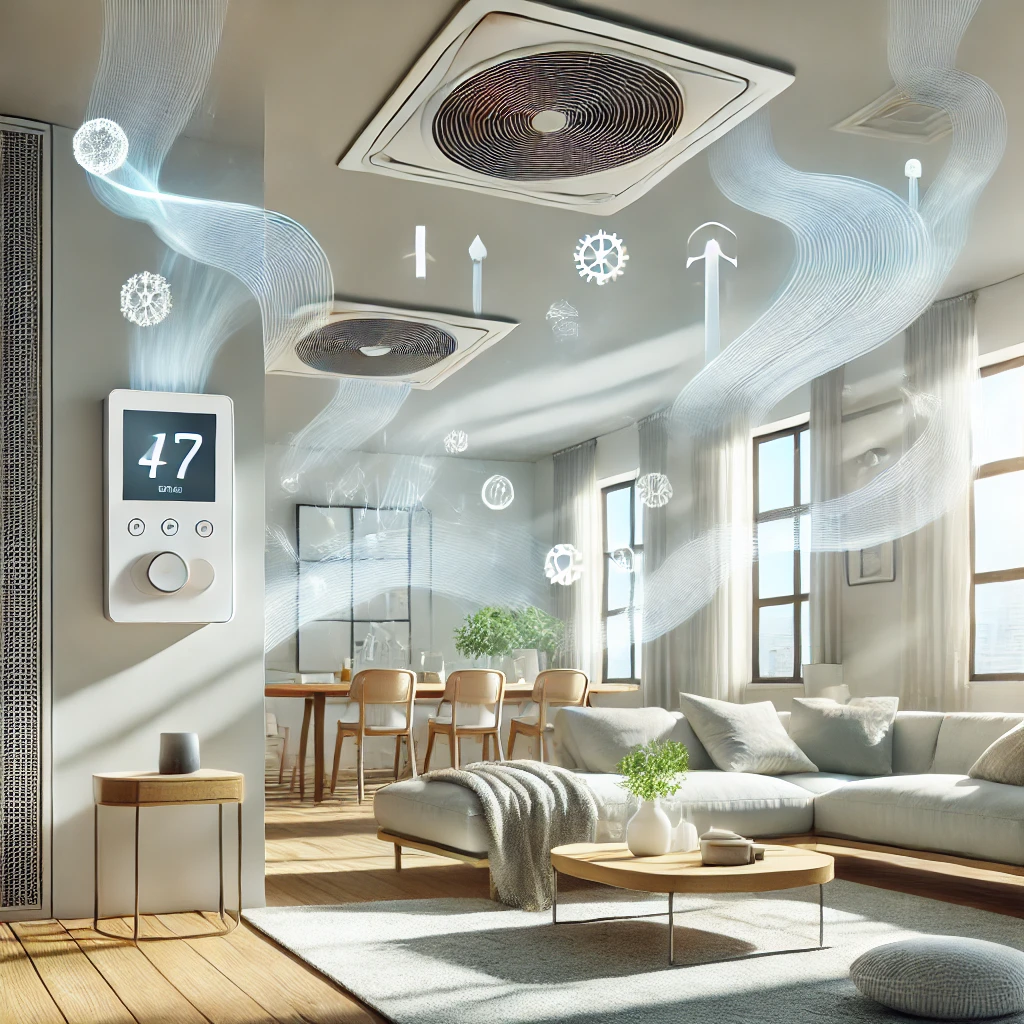Air Flow Technology has become an essential part of modern living, impacting everything from home comfort to industrial applications. This technology ensures efficient ventilation, temperature control, and clean air, benefiting both health and productivity.
Table of Contents
What is Air Flow Technology?
Understanding the Basics
Air Flow Technology refers to systems and devices that control and optimize the movement of air within a given space. By managing airflow, these systems help maintain comfortable temperatures, reduce humidity, and filter out harmful particles, ensuring a healthy environment.
Why Air Flow Matters
Efficient air flow plays a crucial role in regulating indoor temperatures and air quality. This technology is widely used in residential, commercial, and industrial settings to enhance comfort and productivity. Additionally, it is vital in managing energy costs and reducing environmental impact.
Types of Air Flow Technology
1. Natural Air Flow Systems
Natural air flow relies on the movement of outdoor air to ventilate spaces, which can be achieved through windows, vents, or open spaces. While not as controlled as mechanical systems, natural air flow reduces energy consumption and is commonly used in buildings designed with sustainability in mind.
Advantages of Natural Air Flow
Natural ventilation is eco-friendly and energy-efficient. This method requires no electricity and encourages fresh air circulation, which can help improve indoor air quality and reduce energy costs.
2. Mechanical Air Flow Systems
Mechanical air flow systems use fans, HVAC (heating, ventilation, and air conditioning) units, and other devices to move air. These systems are more efficient at controlling air quality, temperature, and humidity levels, especially in larger spaces or in areas where natural air flow is limited.
Key Components of Mechanical Systems
- Fans: Move air through ducts and vents to distribute air evenly.
- Air Filters: Trap particles to improve air quality.
- Heat Exchangers: Transfer heat for temperature control.
- Thermostats: Maintain optimal temperature settings.
Applications of Air Flow Technology
1. Residential Use
Air flow technology plays a critical role in homes, maintaining comfort and enhancing indoor air quality. Systems like air conditioners and heaters work with ventilation units to create a comfortable living environment, regardless of outside weather conditions.
Improving Health and Comfort
Poor air circulation can lead to respiratory problems and allergies. By optimizing airflow, residential systems ensure better air quality, reducing the risk of health issues caused by dust, allergens, and pollutants.
2. Commercial and Industrial Use
In commercial and industrial settings, air flow technology is vital for employee safety, machinery efficiency, and product quality. Factories, warehouses, and offices rely on these systems to ensure proper ventilation and temperature control.
Specific Applications
- Manufacturing: Proper airflow prevents overheating of machinery and maintains consistent conditions for production processes.
- Food Storage: Ensures fresh air circulation to preserve perishable goods.
- Workplaces: Maintains comfortable environments that boost productivity and health.
3. Automotive Air Flow Technology
In vehicles, air flow technology is used to keep engines cool and ensure comfortable cabin conditions. Modern cars use advanced airflow systems that maintain ideal temperatures and filter out pollutants, contributing to passenger comfort and vehicle longevity.
The Future of Air Flow Technology
Innovations and Sustainability
As the demand for energy efficiency grows, innovations in air flow technology focus on sustainable solutions. Green technology, such as energy-efficient HVAC systems and solar-powered ventilation, reduces energy use and environmental impact.
Smart Air Flow Systems
With IoT-enabled (Internet of Things) devices, air flow systems can now be managed remotely. Smart thermostats and air quality sensors allow users to monitor and control airflow in real-time, adjusting settings based on occupancy, weather, and air quality.
The Role of AI and Machine Learning
Artificial intelligence (AI) and machine learning are transforming airflow technology by predicting optimal air settings based on usage patterns. These advancements lead to smarter, more efficient systems that reduce waste and maximize comfort.
Benefits of Air Flow Technology
Health Benefits
Improved air flow means better air quality, which is essential for respiratory health. By reducing indoor pollutants and allergens, airflow systems create a cleaner, healthier environment.
Energy Savings
Energy-efficient air flow systems help lower energy costs by managing air circulation more effectively. This reduces the need for excessive heating or cooling, saving energy and lowering utility bills.
Environmental Impact
Sustainable air flow solutions, such as natural ventilation or energy-saving HVAC units, minimize the carbon footprint. These systems reduce the demand for non-renewable energy sources, contributing to a healthier planet.
Conclusion: Air Flow Technology’s Essential Role
Air Flow Technology is more than just a comfort feature; it’s a critical aspect of health, productivity, and sustainability. As technology advances, air flow systems will continue to improve, offering smart, eco-friendly solutions for a variety of environments. From homes to industries, the benefits of optimized airflow are clear, making it an essential technology for the future.
